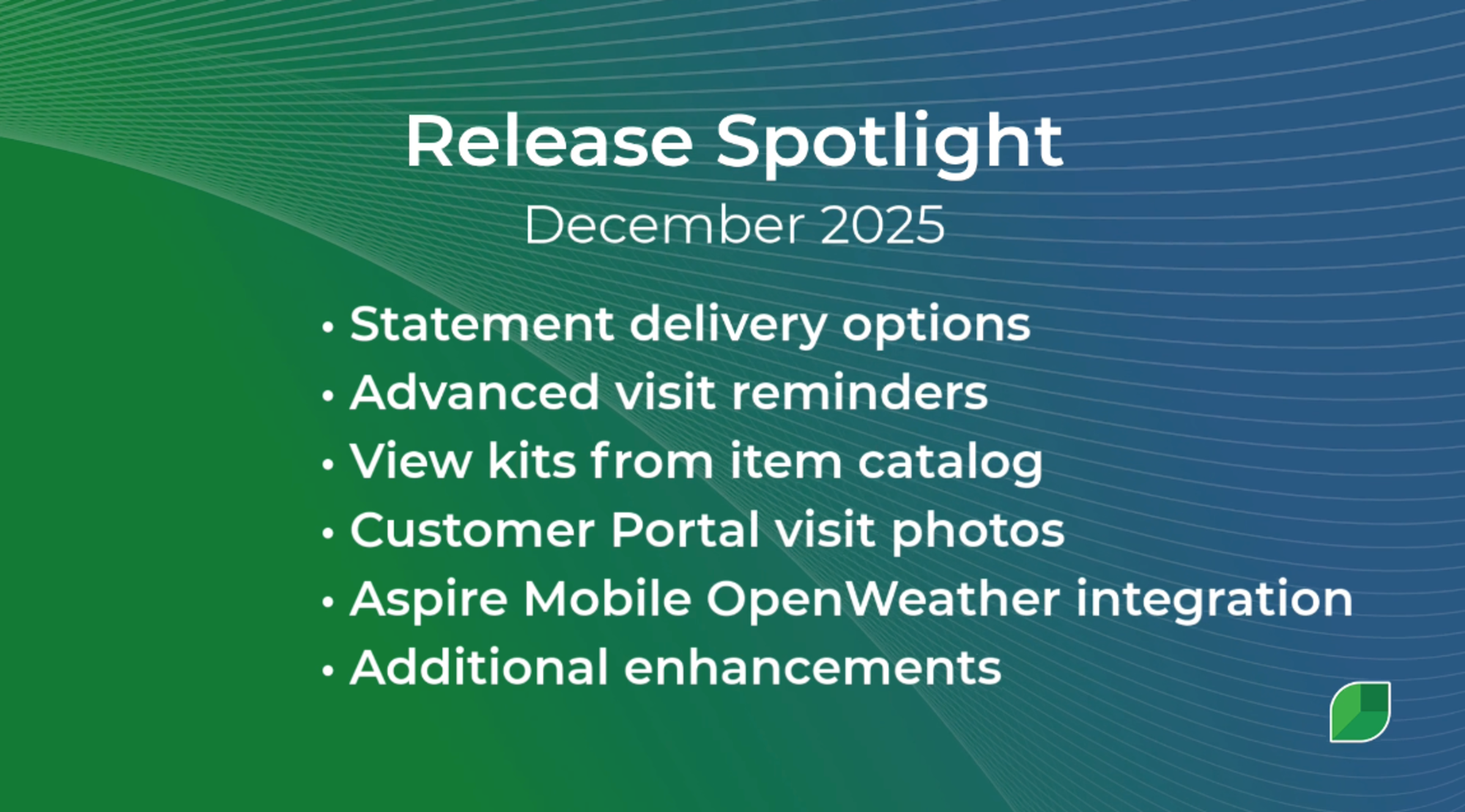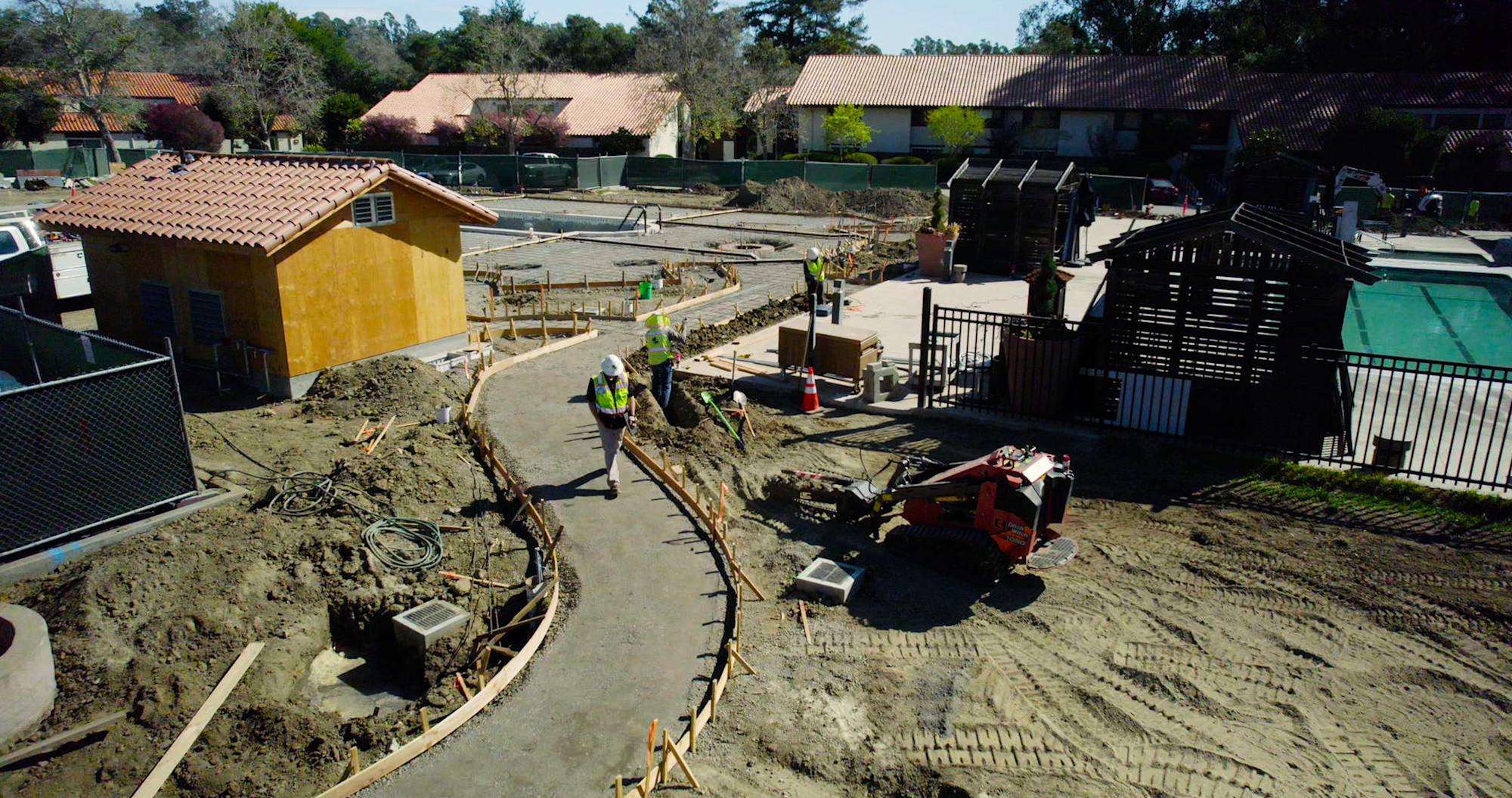Ben Gandy's interests in horticulture and landscaping formed stepping stones in his quest for business and industry success.
"An awful lot of people in our industry tend to focus on the technical aspects of landscaping," says Gandy, a principal for Envisor Consulting and member of the National Association of Landscape Professionals. "Being an expert technician is not the key to scaling your business, satisfying your clients, profitability, and becoming a market leader.
"What's going to get you to the next step in business is developing your organization."
Gandy now teams with landscape businesses to help them focus on systems-based management strategies. He teamed with Aspire's Lindsey Kruse, manager of customer success, to present a recent webinar, "Organizational Development in a Landscape Business." In it, he introduced a business’s six executive-level phases—mission/values, vision, strategy, structure, budget, and business process—but dug deep on the last of those.
"It's really understanding these basic elements, " he says of business process, "so that you can teach it, so that you can have an anchor point for how your business is put together so that you can break through that $1 million or $2 million mark and join the market leaders out there."
Another key part is having a software partner to support the strategy, empower scalability, and drive growth.
"Software intends to facilitate your systems and business process," Gandy says. "You need to make some philosophical decisions about what is true and what's not true for each one of those phases. Then, use the software to facilitate that system so it's closed, stays together, and provides a solution. It doesn't contribute to your chaos but helps take it away."
Here’s a closer look from Gandy and Kruse on essential strategies for business development, client relations, and operational management to drive growth and profit.
1. Opportunity
Whether it's commercial or residential, maintenance or construction, a business must decide on its service focus.
"Great restaurants don't serve everything," Gandy says. "They serve a limited menu because it's easier to train, easier to purchase, and easier to build systems around a limited menu than it is to build systems around an infinite menu.
"'We do anything for anybody' is not a strategy, and big companies tend not to do that."
Aspire software provides the capability to limit the number of estimating templates.
“When you are building templates in Aspire, you are setting whatever expectation you want to provide to the client, to the people in your organization that will be utilizing those templates to send proposals out," Kruse says. "So it takes the perception out of the expectation you want to perceive to the client."
2. Scope Development and Design
Limiting the scope options is a smart move if you're selling landscape maintenance.
"We don't sell everything," Gandy says, "but if we sell it, the salespeople may be required to add some information, especially to the design, so that the production guys can produce it responsibly."
A one-off, such as work for a municipality, can even fall under a template created for municipality maintenance.
"Keep it simple," Kruse says. "Take all of the complexity out of it. Do the same thing day in and day out and tell them that's what it will be."
3. Estimating
Estimating needs to be cost-based, giving a company the chance to mark up prices to recover overheads. It should also be standardized for all business teams.
"You don't want the downstream parties having to swim back upstream to figure out, 'What are we doing here?'" Gandy says.
Changing the markups in Aspire software for subcontractors, labor, or material periodically isn't complicated. And amid a climate of price instability, those changes are critical more often during a year than in previous years.
"I wouldn't just leave those alone indefinitely," Gandy says. "I would make sure they reflect your current financial budgets."
4. Won
Labor and materials budgets will be embedded in estimates in Aspire software. However, a crucial step in what Gandy calls the Won phase is to develop a checklist so that sales can make a clean handoff to production.
"What about the property map?" Gandy asks. "What about start dates, completion dates? You need to develop, within this Won phase, the checklist that sales owes production."
Then, those documents can be saved in the software.
"It's so mission-critical," Gandy says. "It hurts my heart to have production guys out there in the cold, in the heat, have them swim back upstream to find all that information out. Let's do it on the front end, make it the salesperson's responsibility, and then go to work."
Kruse says that, besides providing job costs, Aspire's software is also designed to improve internal communications.
"You can ensure that the right people are doing the right thing," Kruse says, "so everybody gets where they need to go, and it's done in a timely manner."
5. Work in Progress
The project's completion phase certainly involves teamwork and a clear division of responsibilities.
"You've got to let operations run the schedules, not sales," Gandy says. "Somebody has to own it, and it's got to be the people who dispatch the crews daily and train and hire and manage those employees."
Aspire software also offers strong reporting capability regarding labor and material costs, completion dates, subcontractors, and change order management.
"There's no shortage of reporting available on the software to be able to properly manage work in progress," Gandy says.
Accountability also will trigger needs to determine ownership within the work process.
The sales team should take responsibility for the client.
"As a client from time to time, I don't want to be passed along to somebody else," Gandy says. "I like to stay in touch with whoever sold me."
However, teams need to work together when it comes to quality, sales, and production.
"We can't hope somebody takes care of that," Gandy says. "Let's all take care of that."
6. Closeout and Renewal
After a job is complete, a company that must return to the work cuts into its profitability and reduces customer satisfaction.
Gandy touts the need for communications near the end of a construction job and the need for a checklist to get a company out of the job successfully.
And the same is true, he says, regarding renewal.
"Did we make the client happy?" he asks. “What do we need to do to ensure that we're properly priced and making the client happy going into the next year?"
Job cost reports, available in Aspire software, give sales and operations teams a chance to review maintenance or construction work.
"It always tells a story," Gandy says. "It tells a story of what we did well that we can celebrate and repeat and where we might've missed. Everybody gets wiser from those conversations."
Measuring Success
Software reporting capabilities, such as those found in Aspire software, enable companies planning and performing landscape construction and maintenance projects to make decisions based on historical and real-time data and eliminate assumptions-based strategies.
"You need gross margin reports," Gandy says. "Labor efficiency reports so that you can understand how you're trending, where you need to jump in, and where you need to correct.
"In general, there's a short set of sales, production, and financial reports. If you've got those, you've got enough in terms of your dashboard and your key performance indicators to keep up with."
Those key performance indicators are essential elements of a fully formed process for getting to that next step: operating a business and maximizing profitability.
"Great systems produce predictable outcomes, and standardized workflows are going to optimize your resources," Gandy says. "You've got limited resources, so you need to optimize every one of them. And if you can really understand what's true and what's not true about your workflow, and then use Aspire to facilitate that so that you at least limit the number of offline spreadsheets and whiteboards and everything is enclosed in that system, then it's so much easier to manage your business."






